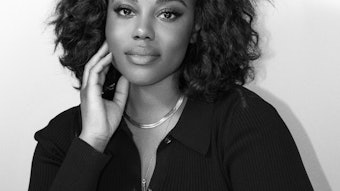“… the kind of shop I’m thinking of opening is one that sells natural cosmetics in different sizes and in cheap, refillable containers,” Anita Roddick told her husband Gordon in the mid-1970s. When The Body Shop’s first branch opened in March 1976 with 25 products, that is what she did.
Everything Roddick did in her start-up year was dictated by her lack of funding. The Body Shop’s logo was designed for £25, approximately US $46 dollars; friends helped fill bottles and hand-write labels; the inside of the shop was painted dark green to cover damp patches on the walls—only later did the color green represent the environmental movement; and when she could not afford to buy enough containers, she offered to refill empty containers or fill the customers’ own bottles. “In this way, we started recycling and reusing materials long before it became ecologically fashionable,” wrote Roddick in her book Business As Unusual (Burlington Press Ltd, England, UK, 2000).
“From the beginning we wanted to be … honest about the products we sold and the benefits they promised,” added Roddick. Results from a survey in England told Roddick that she was right: Women believed that honesty was the best policy for cosmetic companies, not only in what ingredients were in the product, but also the results the product claimed to produce.
Roddick made certain guarantees to her customers: the integrity of her franchises and suppliers; that ingredients in the products had not been tested on animals; that any material a customer bought was renewable; and that nothing the customer bought “was used to prop up a regime that offended human rights.”
Over the years, The Body Shop product line grew to more than 600 products and 400 accessories. An important element of product development became what Roddick calls “community trade” relationships.
According to The Body Shop’s Web site, www.thebodyshop.com, the goal of community trade relationships, “is to help build livelihoods and to explore trade-based approaches to supporting sustainable development by sourcing ingredients and accessories from socially and economically marginalized producer communities.”
Aran Puri was head of research and development and general manager of the fair trade department during his decade with the company. One of his projects was ;to open and run The Body Shop Research Centre in Brazil where his mission was “to discover new materials, fair traded where possible, to go into new products for the next century.”
Among the ingredients the company now obtains through community trade relationships are babassu oil and Brazil nut oil (Brazil), shea nut butter and cocoa butter (Ghana), sesame seed oil (Nicaragua) and hemp seed oil (Canada). On Roddick’s Web site, www.anitaroddick.com, she writes: “The Body Shop now has 29 such projects in 23 countries, and we aim to develop more.”
The company manufactured its own products from 1981–2000 and, therefore, had complete control of ingredients and testing. The decision was made to get out of the manufacturing business in 2000. After that time, The Body Shop would not start relationships with new manufacturers unless they agreed to a full social, animal and environmental audit. Suppliers were asked to complete a screening questionnaire that told The Body Shop, “All we need to know from the environment, health and safety, and quality points of view. We still create the product ideas in our own laboratories, and then we find someone to manufacture them for us to our precise specifications and wherever in the world is most suitable,” Roddick writes.
The company first went international in 1978 (Belgium), went public in 1984 and came to the United States in 1988. Growth continued, which resulted in some organizational challenges including the appointment of a CEO in 2002 so Roddick could concentrate on style and image, communications and social responsibility. Then in March 2006, The Body Shop was sold to L’Oréal.
Anita and Gordon Roddick have two daughters and several grandchildren. They founded The Body Shop Foundation in 1990. To date it has donated more than £8 million, approximately US$ 14.5 million, to 180 charitable groups throughout the world.
Roddick became involved in environmental and women’s rights actions around the world as her business became international. After the sale of The Body Shop, she continues this involvement.










